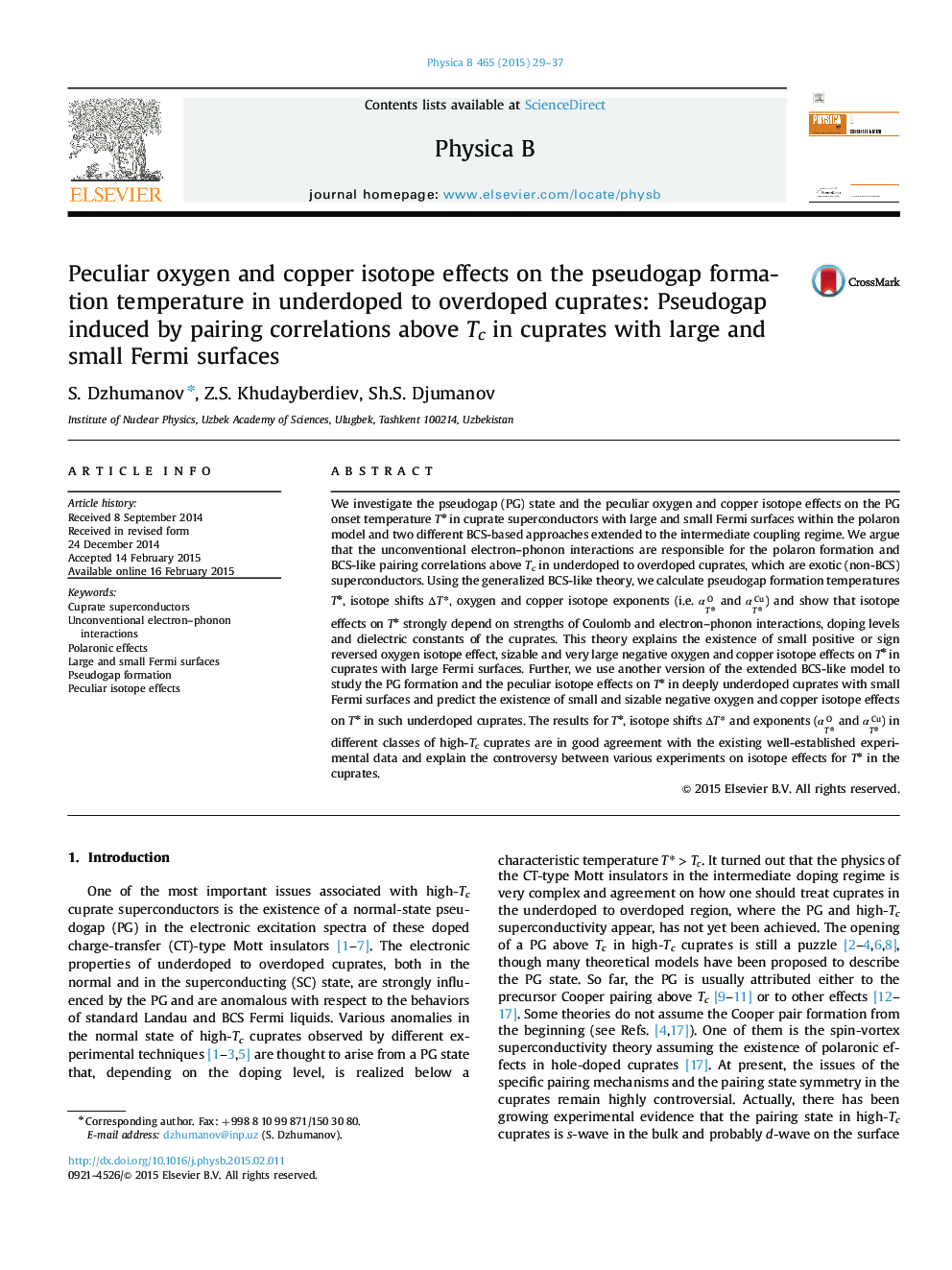| Article ID | Journal | Published Year | Pages | File Type |
|---|---|---|---|---|
| 1809081 | Physica B: Condensed Matter | 2015 | 9 Pages |
Abstract
We investigate the pseudogap (PG) state and the peculiar oxygen and copper isotope effects on the PG onset temperature Tâ in cuprate superconductors with large and small Fermi surfaces within the polaron model and two different BCS-based approaches extended to the intermediate coupling regime. We argue that the unconventional electron-phonon interactions are responsible for the polaron formation and BCS-like pairing correlations above Tc in underdoped to overdoped cuprates, which are exotic (non-BCS) superconductors. Using the generalized BCS-like theory, we calculate pseudogap formation temperatures Tâ, isotope shifts ÎTâ, oxygen and copper isotope exponents (i.e. αTâO and αTâCu) and show that isotope effects on Tâ strongly depend on strengths of Coulomb and electron-phonon interactions, doping levels and dielectric constants of the cuprates. This theory explains the existence of small positive or sign reversed oxygen isotope effect, sizable and very large negative oxygen and copper isotope effects on Tâ in cuprates with large Fermi surfaces. Further, we use another version of the extended BCS-like model to study the PG formation and the peculiar isotope effects on Tâ in deeply underdoped cuprates with small Fermi surfaces and predict the existence of small and sizable negative oxygen and copper isotope effects on Tâ in such underdoped cuprates. The results for Tâ, isotope shifts ÎTâ and exponents (αTâO and αTâCu) in different classes of high-Tc cuprates are in good agreement with the existing well-established experimental data and explain the controversy between various experiments on isotope effects for Tâ in the cuprates.
Keywords
Related Topics
Physical Sciences and Engineering
Physics and Astronomy
Condensed Matter Physics
Authors
S. Dzhumanov, Z.S. Khudayberdiev, Sh.S. Djumanov,
